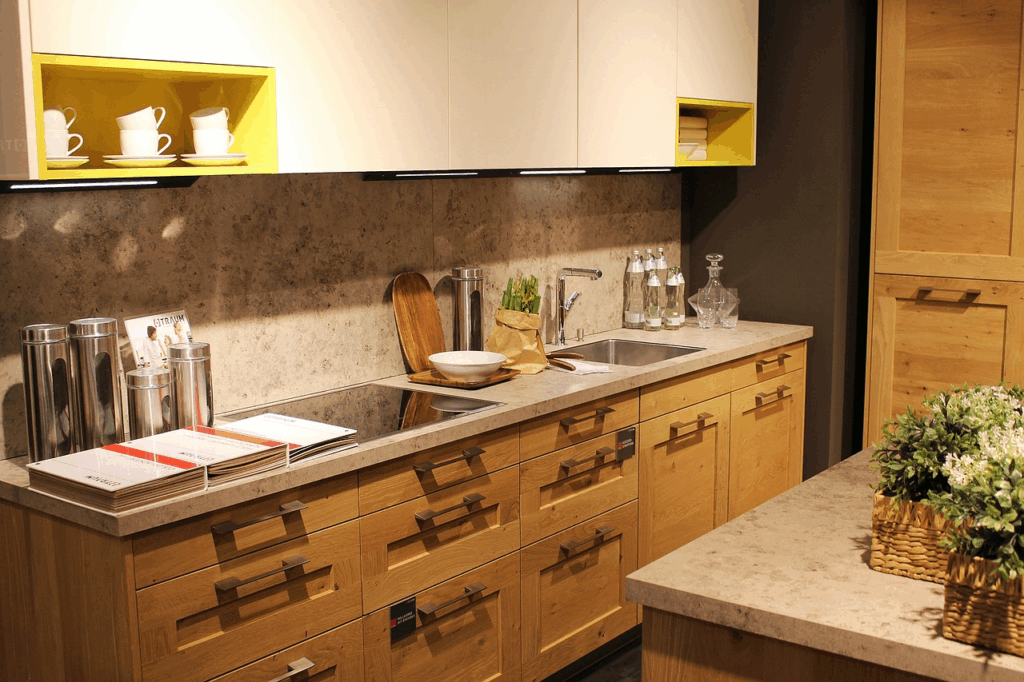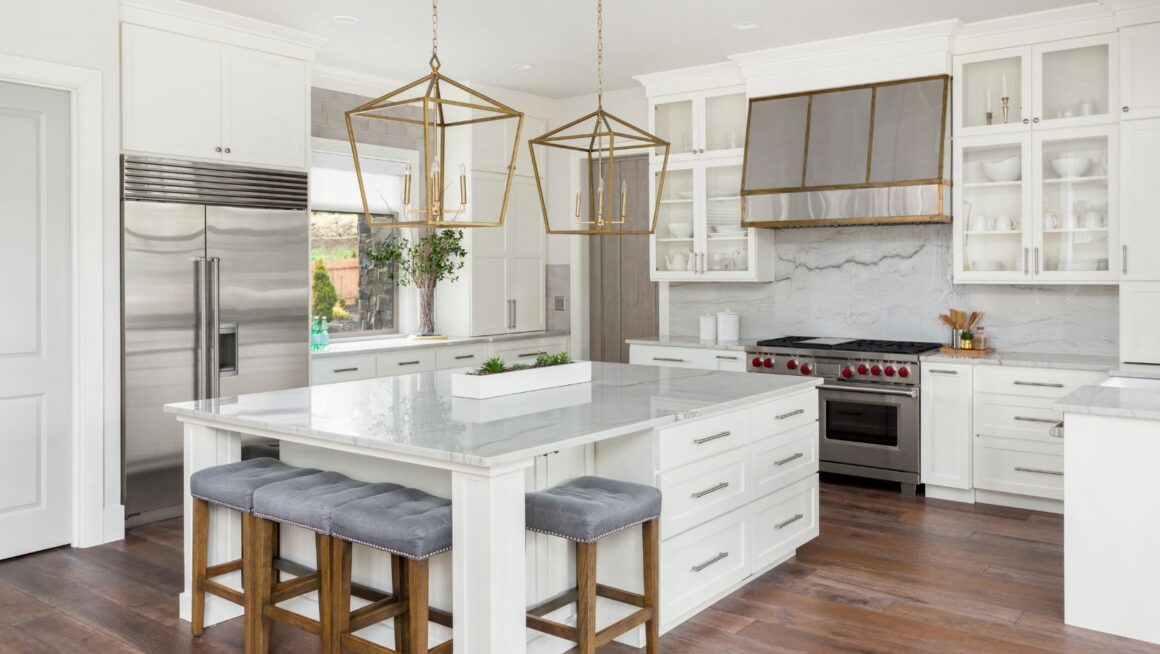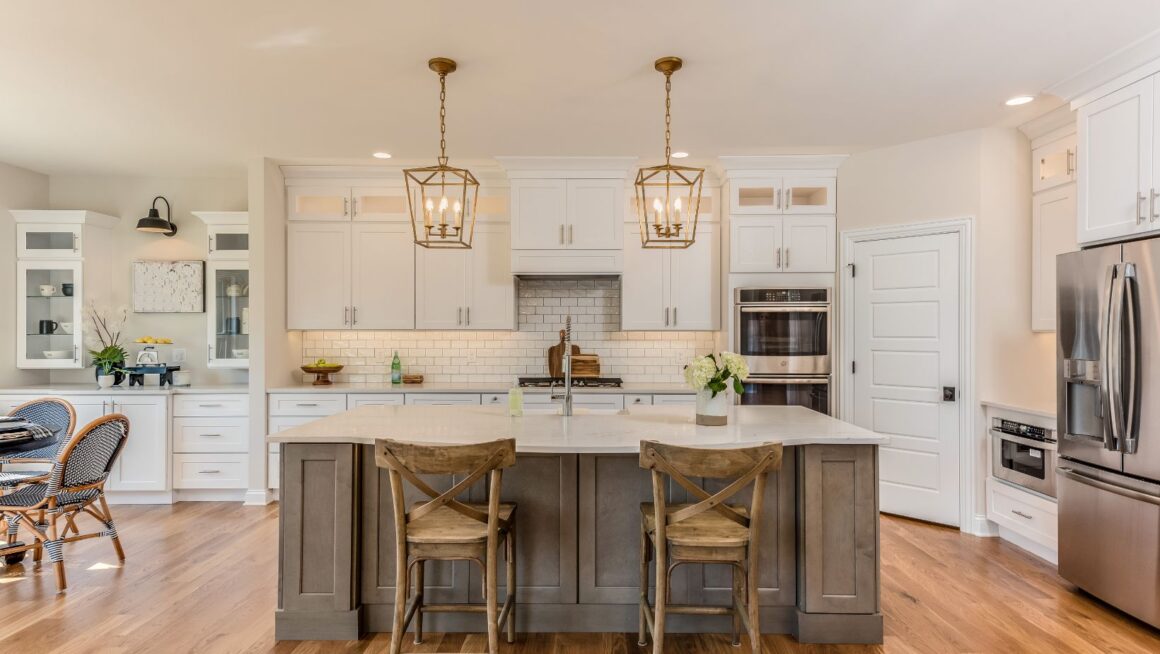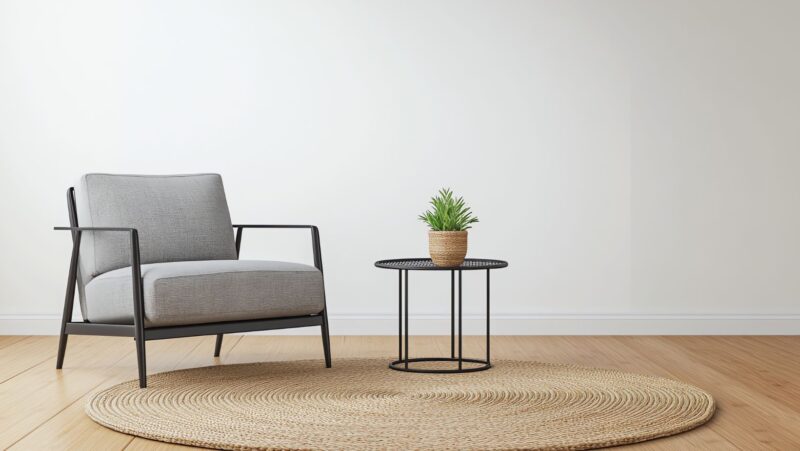
Looking for an easy kitchen transformation on a budget?
Try pendant lights. They’re not just a functional light source–they’re a design feature that can add major impact to the space. Here’s how to use pendants in creative ways around the kitchen.
Pendant lights can serve a variety of purposes in kitchens.
There’s no need to limit them to a single style or placement.
Here’s what to learn:
- Why pendant lights are a natural fit for kitchens
- Where to hang them in addition to kitchen islands
- How to mix pendant styles for maximum impact
- How to choose pendant light sizes and hanging heights
Pendant Lights Are The New Kitchen Big Bang
Pendant lights are no longer just for kitchen islands.
They can be used anywhere to make a statement and add charm to the space. Here’s why…
According to recent research, search volume for pendant lighting increased by 14% from June 2024 to June 2025. That’s a huge increase in just one year!
Why are pendant lights the biggest trend in kitchens?
Part of the appeal is the versatility they offer.
Pendant lights can be hung above the sink for a feature that also provides excellent task lighting. They can be grouped over breakfast nooks to create a cozy area for morning coffee or after-dinner snacks.
Look for sources of inspiration for what pendant light styles will work with different design aesthetics. When you check out America’s Most Popular Lighting Styles: A State-by-State Guide you’ll find they offer great insight into where the trends are headed across different regions.
Hang Pendants Creatively
When most homeowners start thinking about pendant lighting options, they immediately assume they’re only for islands.
This is such a missed opportunity!
Over The Sink
The kitchen sink is another area that could really use a pendant. It gets used every day, but that doesn’t mean it has to be boring.

Consider hanging a pendant over the sink for beautiful lighting and ambiance. Or use two smaller pendants for even more of an impact. This setup can create some vertical separation between the prep and cooking area and the sink.
In Breakfast Nooks
Create a cozy little spot for coffee and pastries with a collection of pendants over a breakfast table.
Choose different heights for visual interest or a single style for a more streamlined look. This lighting idea creates an intimate dining area that’s separate from the main workspace in the kitchen.
Above Open Shelving
Mini pendant lights are surprisingly versatile.
Hang them above open shelving to illuminate displayed items. Pick simple and understated pendants in this case.
Corner Workstations
Pendant lighting can also add definition to a corner desk or workstation in the kitchen.
Having a little nook for food prep, eating or homework can be a nice way to separate this area from the main workspace.
Mix And Match Pendant Lights Like A Designer
Don’t be afraid to mix pendant light styles.
A new trend is breaking away from having to match every fixture in a kitchen. According to recent trends, mixing different pendant styles is actually encouraged now.
The key is finding a cohesive element among the pendants selected.
Perhaps it’s a matching finish like brass accents or black cords. Or the pendants could be different sizes and shapes, like a large dome over the island and smaller globes over breakfast nooks or corner desks.
Mixing and matching pendant lighting styles can add a fun, eclectic touch to the kitchen. Just make sure to keep one element consistent to create cohesion.
Pendant Sizes And Hanging Height Is Important
Pendant sizes and heights make a difference.
But the reality is that if this gets done wrong, it could throw off the whole balance of the kitchen.
Sizes
Talk about sizes first…
If pendant lights are hung over an island or kitchen workspace, aim for 12-20 inches wide for a standard-sized counter. If there’s a large island, don’t be afraid to go bigger with oversized pendants.
If pendants are hung over a breakfast nook, dining area or small space, keep the lights smaller than 12 inches.
Height
The height at which pendant lighting hangs also matters.
Hang pendants 30-36 inches above a kitchen island or counter. This is enough distance to provide clearance while still casting a good amount of light onto the counter below.
If pendant lights are hung above a dining table, the recommended hanging height is 28-34 inches above the table. This is a lower height that creates a more intimate lighting and doesn’t block sightlines between diners.
Choose The Style Of Pendant Lights
Selecting a pendant lighting style is also important.
There are so many options out there that it can be hard to know which is right for the kitchen.
Modern Minimalist
Modern pendant lights usually feature clean lines and geometric shapes with simple finishes.
This can include glass globes, metal cylinders or abstract sculptural designs. The modern style works well in contemporary kitchens with sleek cabinetry and minimal decor.
Industrial Chic
Industrial pendants typically have exposed bulbs, metal cages and raw finishes. This creates an urban, edgy feel that can really add some charm to the kitchen.
Industrial pendants work well in spaces with exposed brick, stainless steel appliances and other urban accents.
Farmhouse Warmth
Farmhouse pendants usually incorporate natural materials like wood, wicker or rattan. They can create a cozy, homey feel in the kitchen and work in more traditional spaces.
Or choose farmhouse pendants in a space that’s leaning into cottage charm.
Bold Statement Pieces
Bold pendant lights often feature colorful glass, unique shapes or oversized fixtures that are simply showstoppers. These lights are eye-catching and make a statement in any space.
Fun fact: designers report that homeowners are getting bolder with their island lighting selections. It’s no longer the traditional two fixtures either. Many people are opting for 3-4 lights to add some unexpected charm.
Layering Pendant Lights In The Kitchen
Don’t make the mistake of using pendant lighting as the kitchen’s only source of illumination.
Pendant lights can certainly be a beautiful focal point and provide great task lighting for the kitchen.
But they should be part of a layered lighting plan that includes recessed ceiling lights and under-cabinet lights.
This way, different types of lighting can be mixed and matched based on the time of day or occasion. Bright task lighting can be cranked up when cooking and everything turned down to create a softer, more romantic ambiance when entertaining.
The three elements of kitchen lighting working together is where the real magic happens.
The space will be bright, energizing and functional during the morning or afternoon. But when the sun goes down, the kitchen can take on a warm, inviting vibe that family and friends will love.
Make Pendant Lighting Personal
The best pendant lighting choices for the kitchen are the ones that reflect personal style and preferences.
Don’t just follow the trends and throw random fixtures in the kitchen.
Take a look at how the kitchen actually gets used and what brings joy when walking into the space.
Maybe the drama and impact of oversized pendants is appealing. Or maybe simple, understated elegance with glass globes is preferred.
There’s no right or wrong choice here. The pendant lighting that’s best for the kitchen is the one that makes people smile.
Wrap Up
Pendant lights offer endless creative possibilities for kitchens.
They’re functional, stylish and much more versatile than most people realize when getting outside of traditional thinking about placement and use.

Start with the kitchen island if it makes sense to do so. Then look for other spots to add pendant lighting throughout the kitchen.
Mix and match pendant styles and sizes for visual interest but keep one element consistent to tie everything together.
Remember to layer pendant lighting with other ambient and task lighting sources in the kitchen.
With a little creativity and the right pendant fixtures, any kitchen space can be truly transformed.












